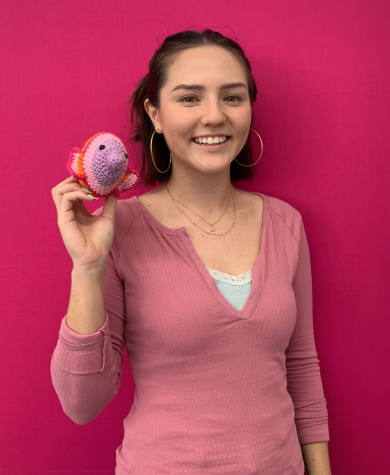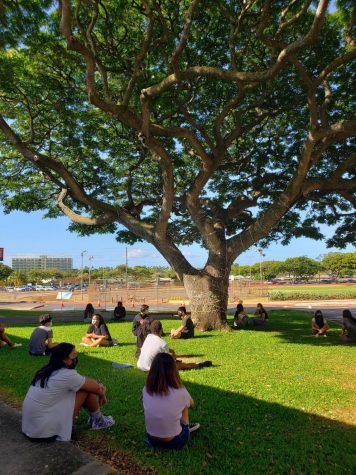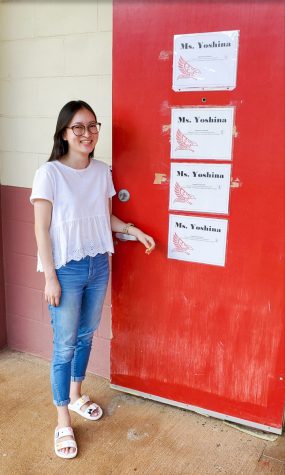Eating school lunches means better food
School lunch on Sept. 20 features a breaded chicken sandwich, apple, milk, and juice packet. Nagasawa distributes breakfast and lunch menus every month for Kalani students and faculty. Photo by Lucy Dooley-Carll 2019.
September 19, 2019
The state assesses the Kalani High School lunch sales every year. From Aug. 15 to Sept. 16, the number of breakfast and lunch sales are counted and, through a formula, these numbers determine cafeteria staffing for the year, according to the cafeteria manager, Brenda Nagasawa.
It is possible to lose a worker or gain a worker, and having the right amount of workers in the cafeteria is important, according to Nagasawa.
“It’s important that we have the right amount of staff so that we can offer you guys quality food, and we’re not rushing to get things out because we’re short-handed,” she explained. “Another thing is making sure the food is safe for you folks. With not enough help, it gets hairy.”
Cafeteria sales are up from last year. The number of people buying breakfast, specifically, has increased.
“I’m really happy with breakfast,” Nagasawa said. “Last year we sold 150 average, 130 maybe, this year, it’s up. For me, if we go over 200, I’m happy.”
The cafeteria manager explains that high schoolers aren’t as dependant on the cafeteria for their meals as kids in elementary school, meaning sales tend to drop when students reach high school. The older students take more responsibility for feeding themselves.
At Kalani specifically, sales drop for another reason.
Because “we live in a more affluent community,” Brenda said, students tend to spend more at places like Starbucks and McDonalds, instead of at school on cafeteria breakfasts and lunches.











